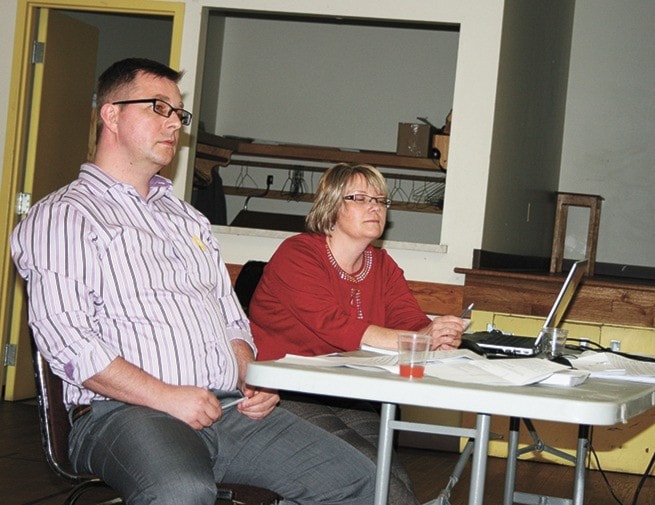A small but engaged crowd of taxpayers attended the City of Kimberley’s open house seeking input on the new Financial Plan.
Mayor and Council were in attendance as well as the City’s Chief Financial Officer, Holly Ronnquist, who took those in attendance through the budget highlights, and Chief Administrative Officer Scott Sommerville.
As reported in the Bulletin last week, the financial plan calls for a four per cent increase to residential taxes and three to business and light industrial. Flat taxes remain the same at$786 for improved residential lots. The Aquatic Centre flat tax remains at $150. For residential taxpayers this works out to an increase of $76.40 per year.
But it was the plan for an increase in utility rates of $24.15 per quarter to fund infrastructure and fleet replacement and a future flat tax of $107.59 to fund infrastructure replacement, that drew the most discussion.
Kimberley, like most every other Canadian municipality, faces an aging infrastructure. Ronnquist explained that Kimberley’s water assets have an average useful life of 48 years, 12 of which remain. The estimated cost to replace water mains and other related infrastructure is $38.9 million.
Sewage infrastructure has a useful life of 49 years, of which ten years remain. The estimated cost to replace the sewage infrastructure is $18 million, not including a new sewer treatment plant.
There was general agreement among those who attended the meeting that money had to be raised to meet these infrastructure demands, one person in attendance going so far as to say that tax increases should be larger to do so.
But should it be done through a flat tax?
It was pointed out that the flat tax was unfair to single people, who paid as much as a two or three person household.
Coun. Kent Goodwin said that he was opposed to flat taxes.
He said that Kimberley was one of only five municipalities in B.C. with a flat tax and with the new parcel tax, plus the pool tax, plus the original flat tax, Kimberley has the largest flat tax in the province.
“It’s time to look at shifting the flat tax to the mill rate, so lower income tax payers aren’t hurt” Goodwin said. “I will be lobbying to shift it.”
The flat tax in B.C. came into being in the early 1990s. While they offer some protection to higher valued properties, so that everyone pays the same price for something like an aquatic centre, the argument is that lower valued properties end up paying more than their fair share.
A lower income person living in a house valued at $100,000 pays the same tax as one living in a million dollar home.
Coun. Albert Hoglund said that there were many scenarios discussed when raising the infrastructure funds was considered and it was decided to use a little bit of both.
“You’re not the first person to disagree,” he said.
Mayor Ron McRae said that part of the consultative process was to seek ideas on how to address the infrastructure issue.
The infrastructure flat tax does not take effect until 2015 and there was still time to consider it.
